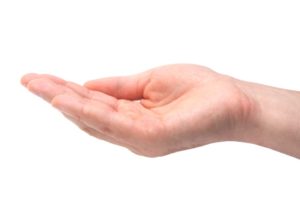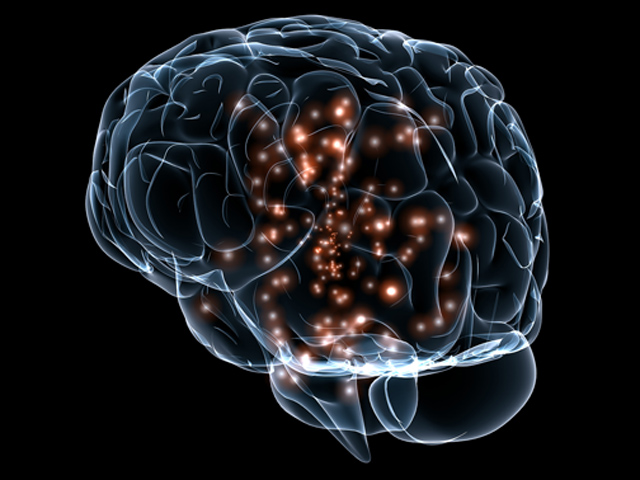by SharonHartnett | Dec 31, 2017 | craniosacral, Craniosacral Therapy, Energy Healing, Massage, Structural Integration, upledger institute
Chronic Pain throws a jolt into life, doesn’t it?
One of the most difficult things about chronic pain is that there is no break. The body continually sends signals to the brain that say “OW”, and there is no rest on a physical level. If your chronic pain is lasting days, weeks or even months, you need some help. And if your chronic pain is coming from an illness level, it’s important that you seek medical help. In addition to that, naturopathic and/or functional medicine can also be very helpful in supporting an overall maintenance or health recovery.

chronic pain
What I would like to talk about is twofold. The myofascial component of pain, and also how the mind reacts to pain.
- Fascia-If there is inflammation in the body, it often affects the fascia as pain or dysfunction of some sort. In the reverse, if the fascial body is tight, disorganized or unhealthy, it can also cause pain patterns. Because fascia interacts with all the living things in your body, it is important to address any myofascial issues that contribute to your chronic pain. The problem is that most people have never even heard of fascia. So they go on medications and travel the traditional route looking for answers. Sometimes- the answers are there. Sometimes not. Mostly, in my practice I receive clients who have found no resolutions anywhere. So what do we do? We begin a dialogue between my hands and the person’s fascia. The body tells me where to go. Whether there are tight sheets, torques, pulls, resistance or whatever- we work there until the soft tissues start to melt and re-vigorate. I look for more hydration, flexibility, motion and general health in the fascia. When this happens, compression and dysfunctional patterns disappear, leaving more flow and energy to help self-correct the physical body. The body eventually begins to feel more space and alignment, and voila- you can breathe again.
- The Mind- It plays a huge part in how we respond to physical pain. It is true, that as human beings, we can suffer with physical pain. But there are other things that can make pain worst. And usually, believe it or not- when we ignore our pain- the pattern usually gets worst. Ignoring our bodies does not create better health. One thing that is helpful to do to relax pain patterns is to do a breathing meditation, Breathing with awareness helps to bring motion back into the body. Motion is vitality. On top of that benefit, when we start to notice our thoughts, and beliefs, we become more empowered in understanding how our mind is organized. When we experience our bodies, with gentle awareness, pain often softens and can actually subside. As we question our unhealthy thinking, the mind expands, and so does the space inside of us. I know, that sometimes it is easier to resist the pain- but that really doesn’t help long-term. Take some time each day to find the silence in the moment, the places in your body that are feeling good, or ask for loving kindness to fill you up. The mind’s relationship to pain is important. If you want to feel better, it is crucial that you start to explore other conscious choices.
I have worked with people on the table for close to 30 years. Chronic Pain is not the easiest thing to shift. But with a holistic approach, I have seen people get better, and heal. Looking at the foods you eat, your exercise schedule, how you think and act, along with your meditation practice can truly help. Finding a person to journey with you and support you through modalities like SomatoEmotional Release can be life changing.
Remember, that chronic pain can be a lonely place. Don’t leave yourself in that position. Get some help because your life is important.
Sharon Hartnett LMT, CST-D, SomatoeEmotional Release, SI, BHSP, Hakomi
703 509-1792
www.craniosacraltherapistcolumbus.com
Serving The Columbus Area
www.upledger.com
by SharonHartnett | Apr 22, 2017 | Massage License in Ohio: 33.007505-H-K
Good news! You can Relax again
Do you want to get your mind and body back on track? Find a way to relax again?
Most people who come into my office are looking for help in one of the four following situations:
- Chronic Pain
- Anxiety
- PTSD
- Concussions and TBI’s
Craniosacral Therapy in particular seems to address the symptoms associated with these conditions well.
One of the reasons why I became so intrigued with the Craniosacral type of work was that my practice attracted these types of issues, and I wanted to find a way to really connect and serve my clients. It was easy for me to see that many of the people who came in for a massage were feeling tense, and uncomfortable with their bodies. They were feeling stressed and afraid. So the first question I asked myself, was how do I help these people to feel better? And of course- the first thing that seemed necessary was to create a positive and trusting environment that allowed for deep healing.
How did I do start this journey?
I studied massage and bodywork, but also delved into body centered psychotherapy. With 2 years invested in Hakomi and some time studying trauma at SPI, I gained a good understanding of techniques. But I also went and had my own sessions so that I could expand and deepen my experience and hold a more rich and diverse space for clients to open up. I sincerely believe, that the more present we can be with ourselves as facilitators to the healing process, the more we are present for our clients. Furthermore, I studied at the Upledger Institute into the Advanced Levels, as well as going through the Highest Certification possible with them: The Diplomate. For this, I learned their methods on how to work with people on the table who were in need of emotional processing. This work is called SomatoEmotional work.
Some of the common principles that I work with are:
- Creating Sacred Space- A place of safety and trust.
- Allowing organic process to appear. No forcing or pushing, but rather being in time and space together.
- Mindfulness- bringing awareness to the body in a gentle and kind way.
- Using light touch that is caring. This allows the defensive patterns to be bypassed to go deeper.
- Being aware of healthy boundaries
- No giving advice. The Client has their own inner wisdom that can be engaged for self-empowerment.
- Listening on various levels. Clients have much to say verbally, but also non-verbally. The body is a crucial aspect of the healing process.
- Trusting the tissues, and the dialogue that happens in the silence.
- Staying curious and in neutral. This means no judgments.
- Keeping the work confidential unless instructed otherwise by client.
- Using techniques that are supportive and nourishing.

Relax
Coming into the office, it’s important to find out for each individual, what helps them to relax. Sometimes people with anxiety and PTSD don’t have a clue how to do that. They may be used to living with hyper vigilance, guilt, disassociation, and or intrusive thoughts, just to name a few challenges. People who are tense or/and are in pain might not be able to focus on anything else. And I as the Craniosacral Therapist need to understand that there might be trauma, violence or emotional scarring that needs to be acknowledged.
So I listen to see what the stressors are. We address them one by one in a variety of ways. Sometimes this may take a few minutes and the person is snoring on the table, and other times, it may take many sessions. With patience, often the gentle touch of Craniosacral Therapy can sooth the Central Nervous system. I have had clients tell me after a few sessions that they can’t remember ever being so relaxed. The Craniosacral Therapy works with the cerebrospinal fluid that circulates around the brain and the spinal cored. Believe it or not, we craniosacral therapists can feel how it works with the body through a flexion and extension motion that can be felt anywhere on the body. Often when the system shuts off, we can tell when something significant is occurring, helping the body to release any cellular dysfunctioning. Our intention is to continue to support in as gentle a way a possible whatever unfolds and is ready to process. Also, I have personally studied the brain quite a bit, and find that is possible to directly dialogue with the tissues (i.e. meninges). Often clients who have not healed completely from concussions and TBI’s find great relief, more clarity, balance and presence after a series of sessions.
The key to learning how to relax again, and to letting go of painful and fearful states, is to bring awareness back to self in a kind, and compassionate manner. To be able to work together going deep into the Central Nervous System, we can help the body to come into better organization in its more natural way of being.
If you would like to find a way to relax again, safe hands and safe presence will help you to remember the way.
Sharon Hartnett LMT, CST-D, SI, BHSP
703 509-1792
www.upledger.com
www.craniosacraltherapistcolumbus.com
by SharonHartnett | Jan 6, 2016 | Craniosacral Therapy, Massage License in Ohio: 33.007505-H-K, Structural Integration
When I ask clients who come into my practice with a diagnosis of Chronic Myofascial Pain (CMPS) symptom about their lifestyles, the first significant thing that I usually hear is that they are in jobs with repetitive contractive positions or that they are athletes.
Some of the difficulties they may share are: deep chronic pain that may seem unrelated in different parts of the body, symptoms worsen, eyes tearing up, difficulties sleeping, big knots, and aggravation due to their unrelieved symptoms.
For years I have been working with clients who face similar chronic conditions that don’t seem to get resolved in the traditional sense, so they find me. My approach is to work with the client directly on the myofascial plane first. That is where the pain is, and that it where the body can begin to self-correct.
Often, clients with CMPS, have connective tissue that feels abnormally tight, rigid, immobile and dehydrated. But that doesn’t have to stay that way. Fascia is easy to work with if one is trained properly. By layering in from the more superficial layers into the deeper planes, the all encompassing fascial web can release tension and bring the whole body back into alignment with more ease in rest and motion. However, with CMPS, eventually the massage therapist does need to get in deeper to release those stressed areas. So it’s necessary to find a massage therapist who is willing to use a little elbow if necessary. Also, I have found that although the added pressure is best, Craniosacral Therapy can be very helpful too with its additional techniques as well. By working with the fascia and CSR, especially around the spine, painful energy patterns can dissipate, and the clients often feels more flexibility in motion.

Chronic Headache relief
Not being a physician nor a PT, I can’t give you that type of advice. But I will say, from my experience of many years as a licensed massage therapist, that if you are doing the same contractive movement every day, it might be difficult to get out of pain permanently. This is one those times, that making a commitment to weekly myofascial therapy would be beneficial for most. On the other hand, if you can stretch, do yoga, learn new ways to move that create more balance in your body, that would probably make life a lot easier. Truly an integrative lifestyle approach is going to help you the best.
There is no reason why you should stay in pain.
Sharon Hartnett LMT
740 966-5153
www.massageincolumbusohio.com
Serving the Columbus, New Albany and Johnstown area.
by SharonHartnett | May 21, 2015 | Craniosacral Therapy, Energy Healing, Massage License in Ohio: 33.007505-H-K, mind body & spirit, Structural Integration, thought for the day
The most frequently asked question I receive from clients is…
“How often should I come see you for massage therapy treatments?”
To be honest, one of the reasons I became a massage therapist was because many years ago, my best friend Karen practiced on me while she was in massage school for two hours once or twice a week and I got hooked. She had the most warm and embracing hands that melted everything in my body and soul. I unwound and felt so happy and peaceful afterwards. It was like living on cloud 9 with my body feeling very grounded at the same time. She had the touch of an angel, and I felt so embodied and centered after our sessions.
It wasn’t until a couple years later, when I moved from Colorado to Ohio, that I actually took the plunge myself and dove into the Massage school curriculum at a Massage School in Akron, Ohio. Even then, I was quite surprised to find myself there as it was the last thing I expected as a career choice for myself years before. But the touch, and the healing was wonderful, and I knew that I was right where I needed to be more than any doubts that showed up. So- if I am asked how often should a client receive massage, I’d most often recommend as often as possible as long as it feels therapeutic and it is in your budget. Massage Therapy feels great and helps you to let go of stress and tension which is not healthy for you. When you find the right massage therapist for you and form a deep relationship of holding and healing, your essence and light breaks through so you can be your best. That’s how I view it for myself, and the clients that I see.
With that said, once the above is determined, I like to remind clients and potential massage clients that if you are living in chronic pain or feel an acute pain condition that has just come about, that it takes time for the body to heal. The physical world does not mend as quickly as we are able to skip over to a new thought. Biological healing is a process that unfolds with care and connection. And in most cases, pain situations are an accumulation of many factors including: postural imbalances, habitual patterns of movement, stress, emotional issues, sports injuries, birth traumas, challenges taking in a healthy diet, toxins in our environment, along with other dysfunctional interactions we have in life. So with all that goes into creating a painful situation, it is necessary to balance out with receiving quality care, and allowing the body to repair and self-correct after treatments. Don’t put your stock into a one time fix, although many times these types of miracles can occur to resolve pain relief. In most cases, more work is needed to help the body restore itself to its natural healthy state for the long-run. If you want the honest answer to the question “how many massage sessions do I need to come in for”, the answer is that it depends on your commitment to feeling well and doing whatever it takes to accomplish that. And- healing is a unique and different experience for each person and each relationship.

Massage Columbus
In my practice, I have some clients that come a few times a year for a tune-up or for when they are feeling out of whack, and I have clients who come once or twice a week until things turn around. When clients are specifically interested in the Structural Integration for better alignment and pain relief, I follow a ten session recipe as prescribed by Dr. Ida Rolf for optimal postural re-education results. If the client is experiencing a bulging disk or nerve pain, sometimes it’s best to get a chiropractic adjustment, and wait a day or two for your massage and bodywork. Once the bones are stable, the fascia and other soft tissue needs to be released to help the client to stand straighter in better form. Massage is focused on soft-tissue. Craniosacral Therapy is a fantastic modality of work that directly works with the cerebrospinal fluid surrounding the brain and spine. It is a tremendous therapy for helping clients with structural issues also, although with a light touch. Wonderful benefits has been experienced with conditions like anxiety, stress, ADHD, fibromyalgia, neck and back pain and headaches and more. Clients who can’t fall asleep at night often fall asleep on the table because they are so relaxed. It may take a few sessions, but slowly the nervous system balances and learned to heal in many cases.
Personally, as I have been working in this field almost 17 years, I have more recently kept most of the focus in my practice on myofascial therapy including Craniosacral Therapy, and Structural Integration (as taught by Dr. Ida Rolf). I also include mindful exploration of the mind, body and spirit connection for those who are interested. I have a background in Brennan Healing Science (graduate at former faculty as the Barbara Brennan School of Healing), Reiki, and I like to include my trauma background and Hakomi practice as well into my work. I find that when people come into the massage office, that they are best served by being held in the sacred space of healing and health. However that stress is showing up, my office is a confidential place where everything can be as it is without new conflict or distraction. Because I personally enjoy working with Somato-Emotional Release and with people hoping to find pain relief from previous trauma, I usually like to see clients once a week on an ongoing basis until they feel good. My preference is to work with people who are commitment to feeling well. They get the best results because they see deeper that a session or two for a quick fix. And my hope is that I am doing the best job to help them so that at some point they can stop, or take long breaks until they could use either some proactive massage therapy or they are feeling uncomfortable again.
It’s important to mention that each massage therapist has his/her own unique style. Each client is organized in his/her own way. While a massage therapist can hold space, we are not licensed as psychotherapists. But many of us have had training in dialogue, wellness, coaching, and spiritual healing. If you are committed to unfolding into your presence and health, consider a long-term relationship with your massage therapist and any other type of therapist you would want on your healing team. There are so many possible stresses in the world, we all can use a helping hand at some time. And we all deserve to be happy and feel our best!
Sometimes, I think we forget to treat ourselves well and we give all the excuses in the world to not give ourselves the quiet and nourishment we need.
Wishing you a sacred and beautiful day.
Sharon Hartnett LMT, CST, SI, Brennan Healing Science Practitioner.
740 966-5153
Lighten Up Therapies
Serving the Columbus, Ohio Area
www.massageincolumbusohio.com
www.upledger.com
For your Massage and Bodywork questions, please feel free to write~
by SharonHartnett | Jun 25, 2014 | thought for the day
I like to keep on top of the research having to do with pain.
After all, my work is geared toward helping people to release their pain and find themselves standing happily on the other side.
What is the process to allowing the pain to melt?
My experience has often told me that in order for the energy of an injury to let go, that in the healing process, the senses will bring awareness to the area of dysfunction. In many cases, people don’t even know that the pain is stored away in the deep cellular tissue there until it is touched and penetrated. They’ll say, “oh- I didn’t know that I hurt there.” Believe it or not, by bringing awareness to old pain, it is usually is much easier to let go than you would imagine. Why? Because the pain is often “soft”. When you are willing to gently move into the soft pain, there is usually physical and sometimes emotional release.

activating the messages of pleasure in the brain.
So when I ran into this article, I decided to share it. I believe in feeling deeply to find one’s pleasure.
Let me know what you think about this! Read the Link below:
If we could stop avoiding what is present, we might find that life is much easier than we ever imagined, don’t you think?
Warmly,
Sharon Hartnett
(740) 966-5153
www.massageincolumbusohio.com





